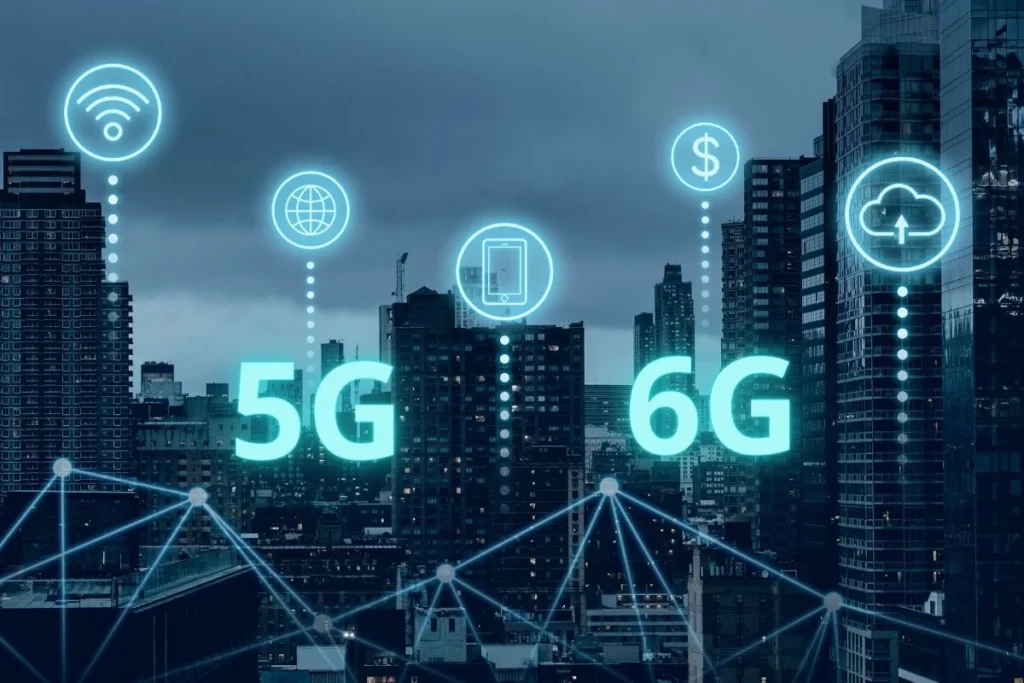
The evolution of mobile networks has dramatically reshaped how we connect, communicate, and interact with technology. With 5G now rolling out across the globe, attention is already turning to the next frontier: 6G. While 5G is still in its expansion phase, researchers, companies, and governments are actively exploring what 6G could offer—and how it might transform everything from smart cities to immersive gaming.
This article compares 5G and the emerging vision of 6G, examining their speed, latency, potential use cases, and implications for our increasingly connected world.
What is 5G?
5G, the fifth generation of mobile networks, delivers significantly faster data speeds, lower latency, and greater device capacity compared to 4G LTE. Launched commercially in 2019, 5G enables real-time communication, high-definition video streaming, and the growing Internet of Things (IoT).
Key Features of 5G:
- Speed: Up to 10 Gbps (gigabits per second) under optimal conditions
- Latency: As low as 1 millisecond
- Capacity: Supports up to 1 million devices per square kilometer
- Use Cases: Smart cities, autonomous vehicles, remote surgery, cloud gaming, AR/VR
What is 6G?
6G is the proposed sixth-generation mobile network, expected to arrive commercially around 2030. While still in the research phase, 6G aims to push the boundaries of wireless communication even further—offering unprecedented speed, ultra-low latency, and seamless integration with emerging technologies like AI, blockchain, and quantum computing.
Predicted Features of 6G:
- Speed: Potentially up to 100 Gbps or more
- Latency: Below 1 millisecond, possibly as low as 100 microseconds
- Network Intelligence: AI-native infrastructure for self-optimizing networks
- Use Cases: Holographic communication, digital twins, fully autonomous systems, tactile internet
5G vs 6G: Key Differences
| Feature | 5G | 6G (Expected) |
|---|---|---|
| Max Speed | Up to 10 Gbps | Up to 100 Gbps or more |
| Latency | ~1 ms | As low as 0.1 ms |
| Peak Frequency | Up to 100 GHz | Potentially up to 1 THz |
| Use of AI | Limited (edge AI, cloud-assisted) | Integrated, AI-native networks |
| Applications | IoT, smart cities, AR/VR, vehicles | Holograms, digital twins, XR, Industry 5.0 |
Real-World Impact: Use Cases Comparison
Smart Cities
- 5G: Enables intelligent traffic systems, real-time surveillance, and connected infrastructure.
- 6G: May enable hyper-connected urban ecosystems with fully autonomous systems, predictive analytics, and real-time environmental simulations.
Gaming and Entertainment
- 5G: Supports cloud gaming and immersive AR/VR experiences with minimal lag.
- 6G: Could enable holographic gaming, ultra-HD content streaming, and real-time multi-sensory feedback.
Internet of Things (IoT)
- 5G: Allows massive device connectivity in smart homes, factories, and logistics.
- 6G: Aims for even more efficient and intelligent device coordination, enabling real-time interaction at scale and with ultra-low latency.
Challenges and Considerations
5G Challenges:
- Infrastructure rollout is costly and time-consuming.
- Limited coverage in rural or underdeveloped regions.
- High energy consumption of network components.
6G Considerations:
- Still largely theoretical with ongoing research.
- Requires new spectrum bands (such as terahertz).
- Raises new concerns around privacy, cybersecurity, and digital equity.
The Future of Mobile Networks
5G is currently transforming how we interact with mobile devices and digital services. However, 6G has the potential to go far beyond, merging the physical and digital worlds in ways that are currently unimaginable. The transition from 5G to 6G won’t be just about faster downloads—it will be about enabling smarter, more immersive, and more responsive experiences that redefine everyday life.
As development continues, collaboration between academia, industry, and governments will be essential to ensure that 6G is secure, inclusive, and capable of addressing global challenges.





